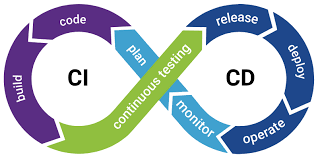Many people hear about CI/CD but are not sure what it really means. In simple words, it’s a way to make software delivery faster, safer, and more reliable. Companies of all sizes, from startups to enterprises, use CI/CD to stay competitive. Let’s break it down step by step.

What does CI/CD stand for?
- CI (Continuous Integration) → Developers merge their code into a shared repository many times a day. Every change is automatically tested. This way, problems are found early.
- CD (Continuous Delivery/Deployment) → Once the code passes tests, it can be delivered to production quickly and safely. Some teams deploy daily, even hourly.
Together, CI/CD is the backbone of modern DevOps.
Why is CI/CD important?
In the past, releasing new software was slow and stressful. Teams waited weeks or months to ship updates. If something broke, fixing it took a long time.
With CI/CD:
- Small changes are released often.
- Bugs are detected early, not months later.
- Customers get features faster.
- Teams feel less pressure, because deployments are routine, not “big events.”
How does it work in practice?
A typical CI/CD pipeline includes:
- Code Commit → Developer writes new code.
- Automated Tests → The system checks if the code works.
- Build → Code is packaged into an app or container.
- Deploy → The app goes to a test or production environment.
Most of this is fully automated, so humans don’t need to repeat the same tasks every time.
Popular CI/CD tools
There are many tools that support CI/CD. Some of the most common are:
- GitLab CI/CD
- GitHub Actions
- Jenkins
- CircleCI
- Azure DevOps Pipelines
Each has its pros and cons, but the main idea is the same: automate the flow from code to production.
CI/CD is not only for big tech companies. Even small startups benefit, because it reduces errors and speeds up delivery. If your team still struggles with slow releases, adopting CI/CD could be the best next step.